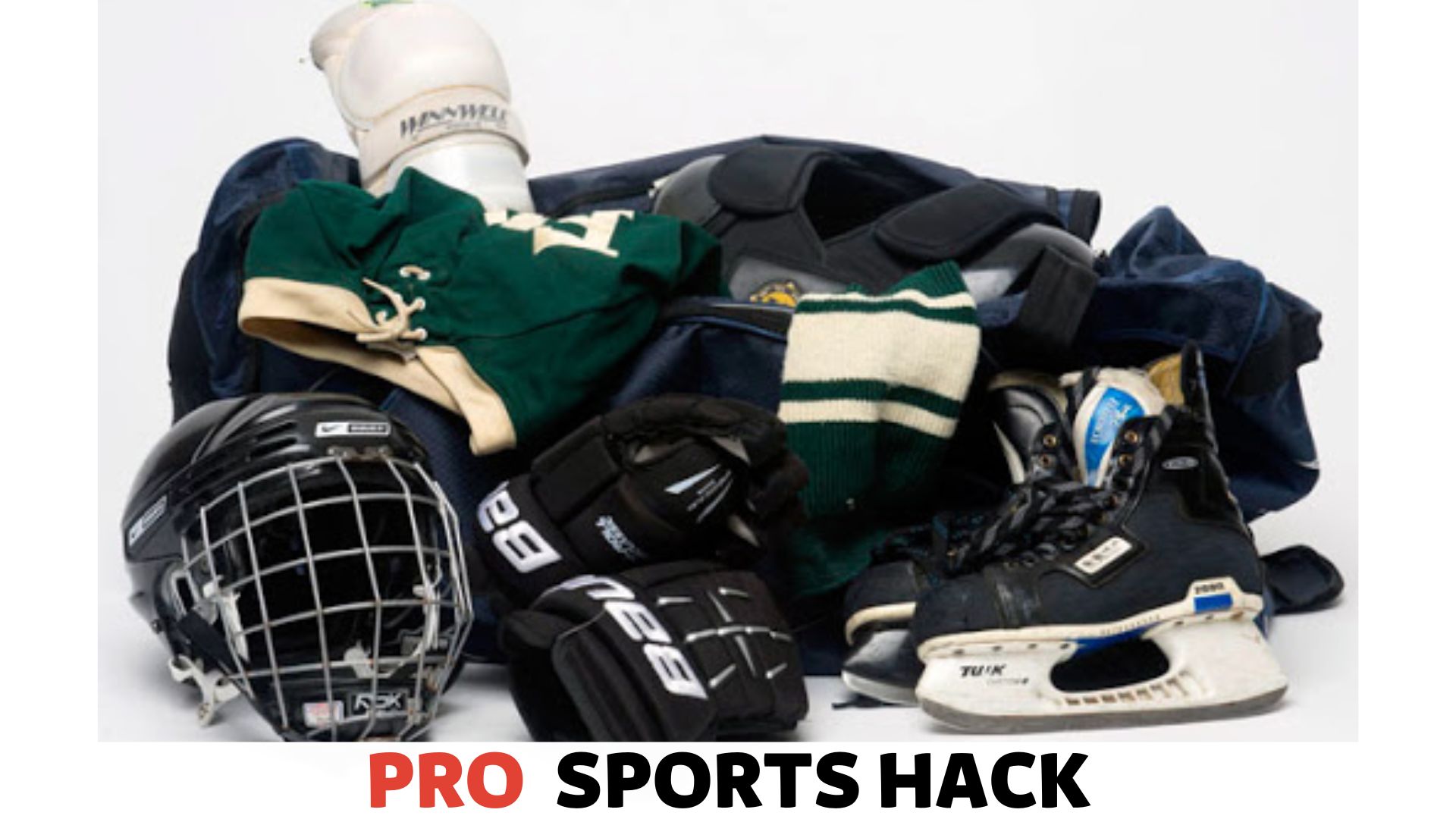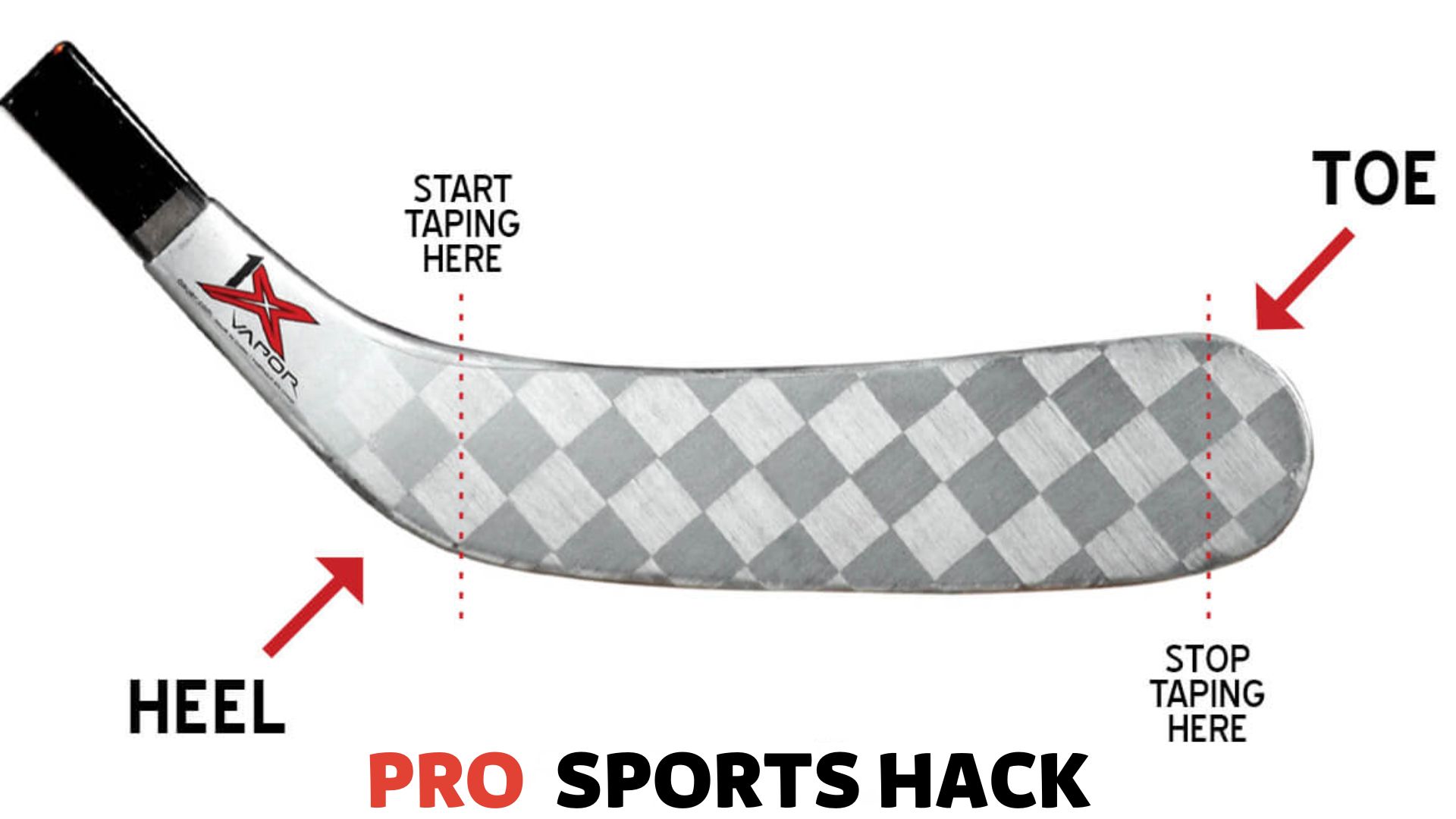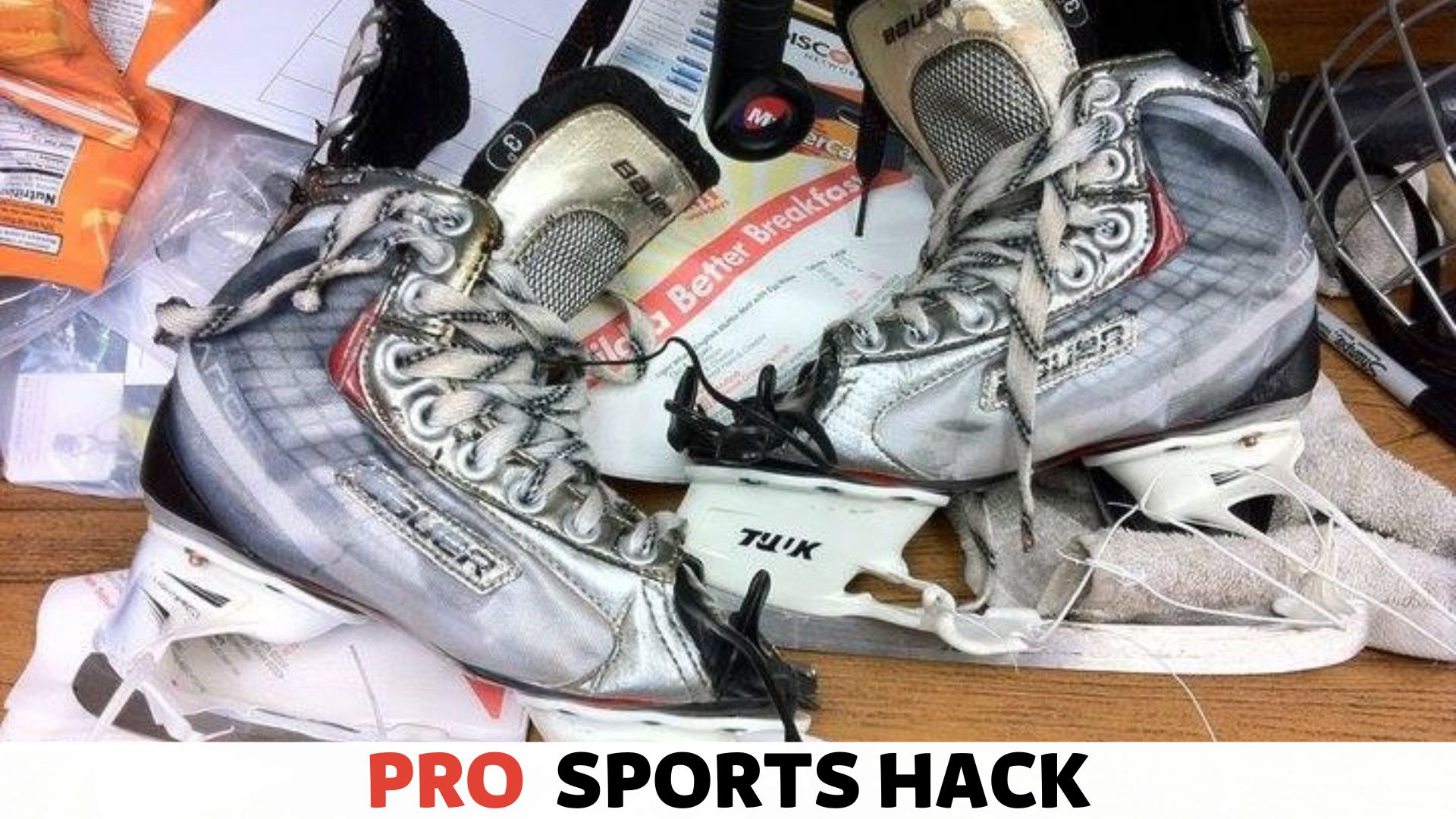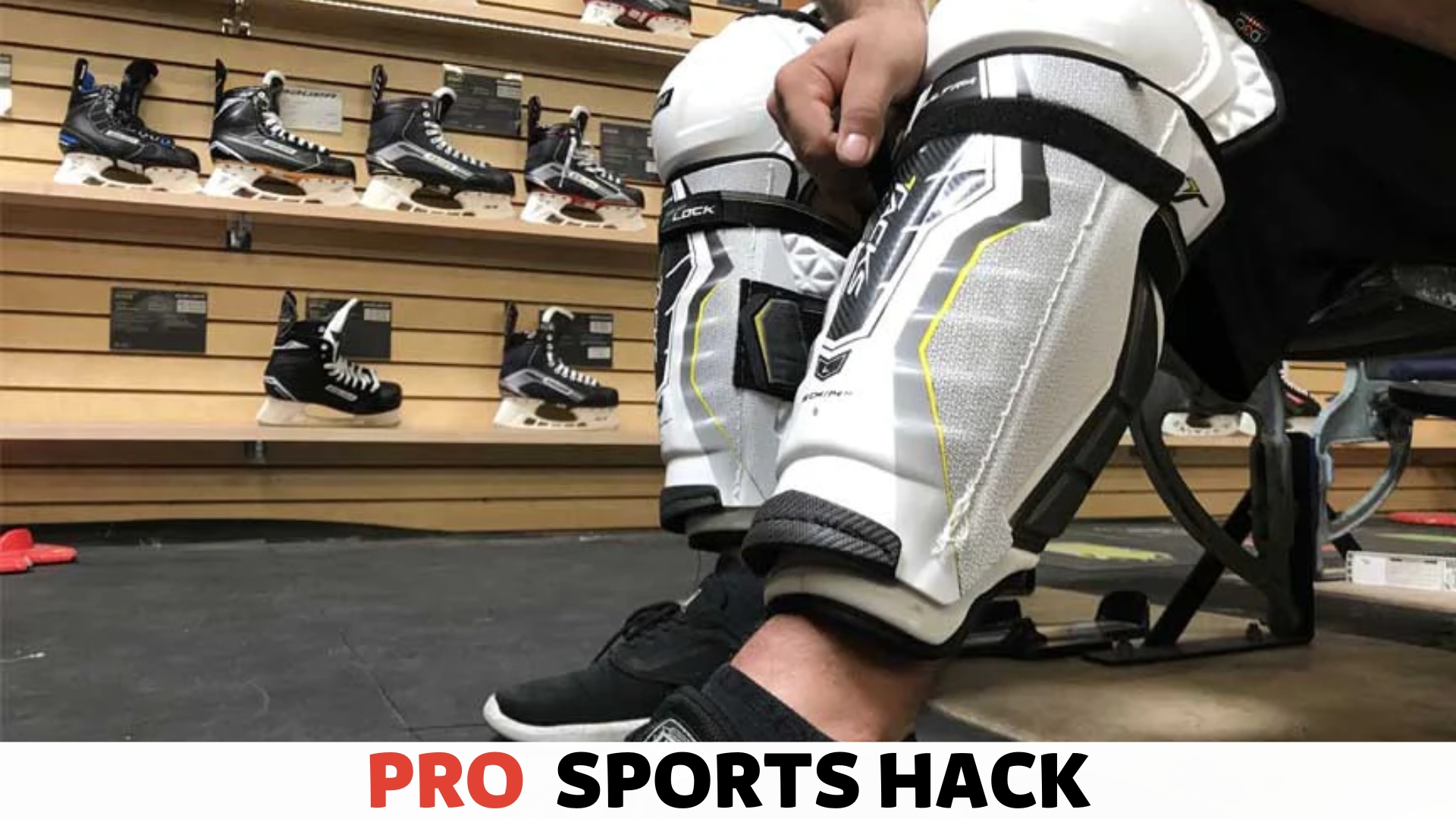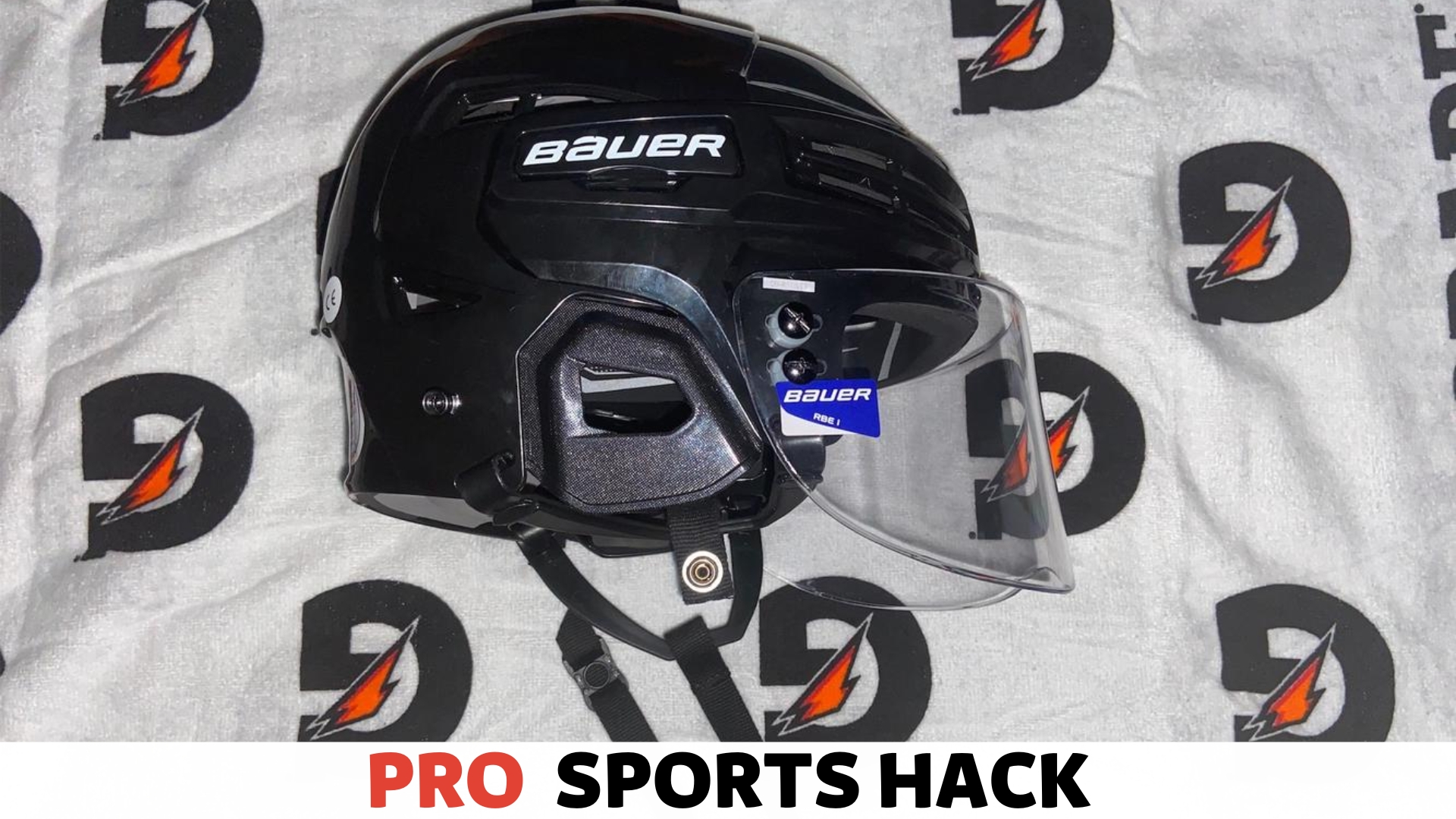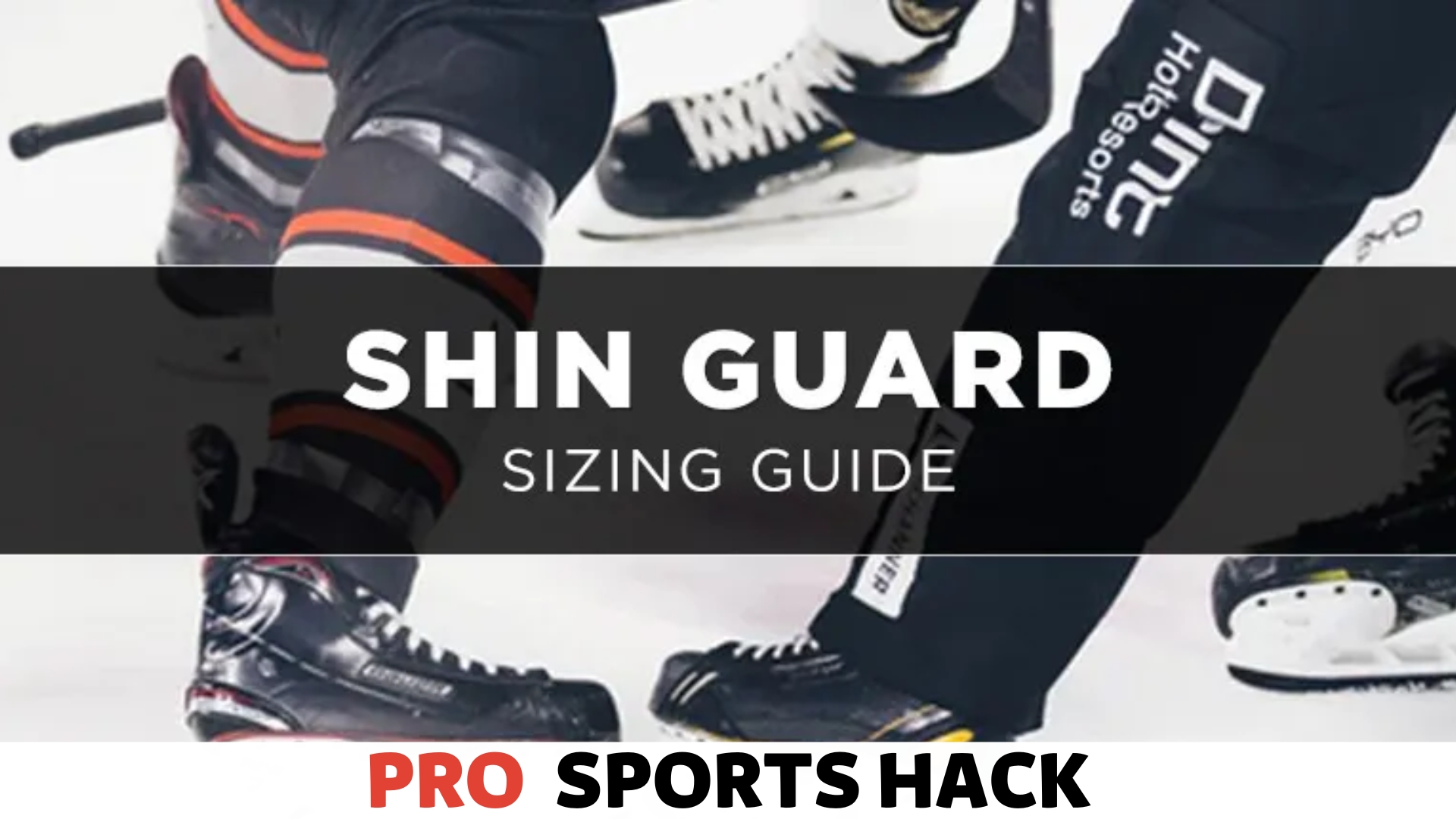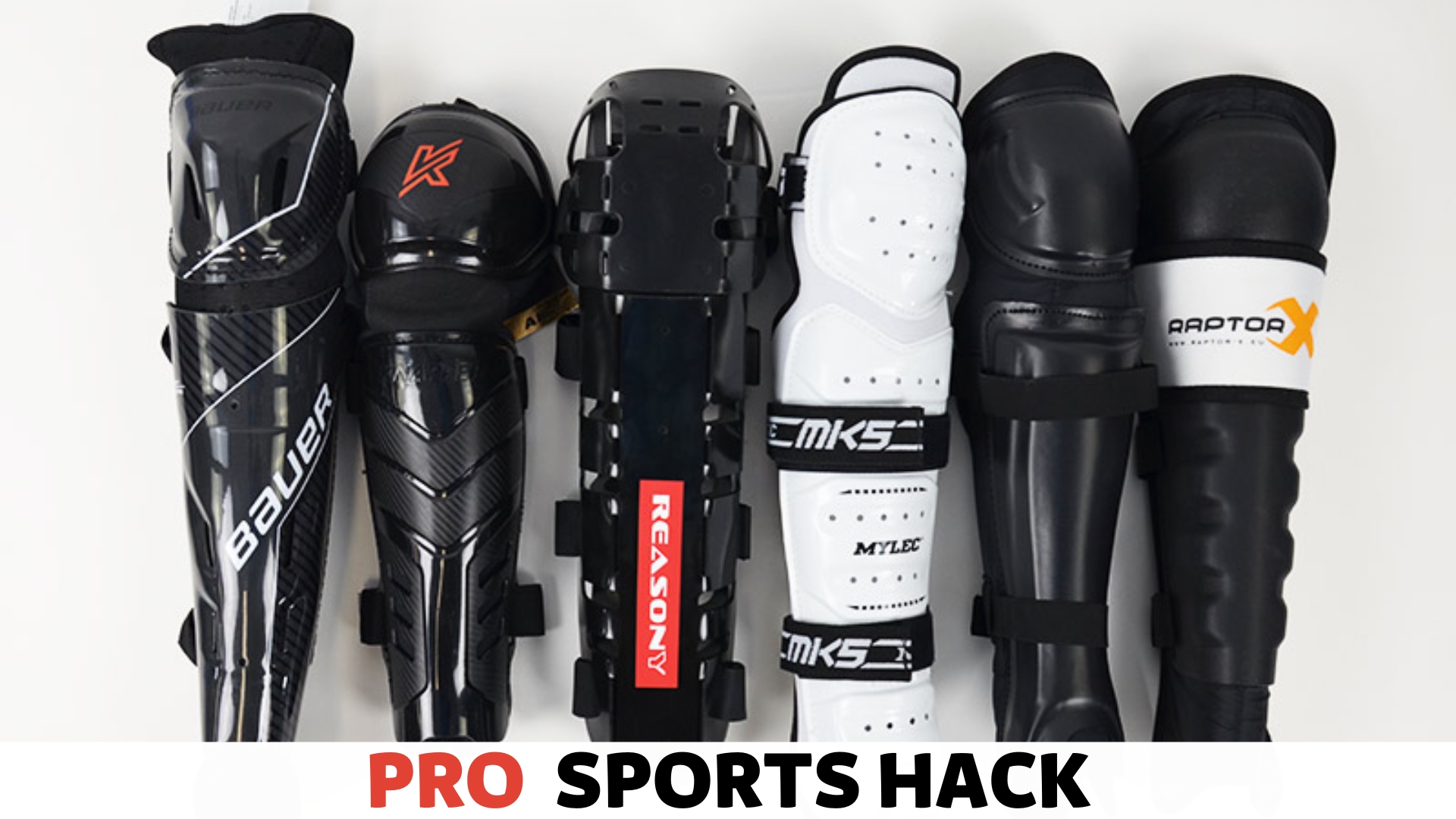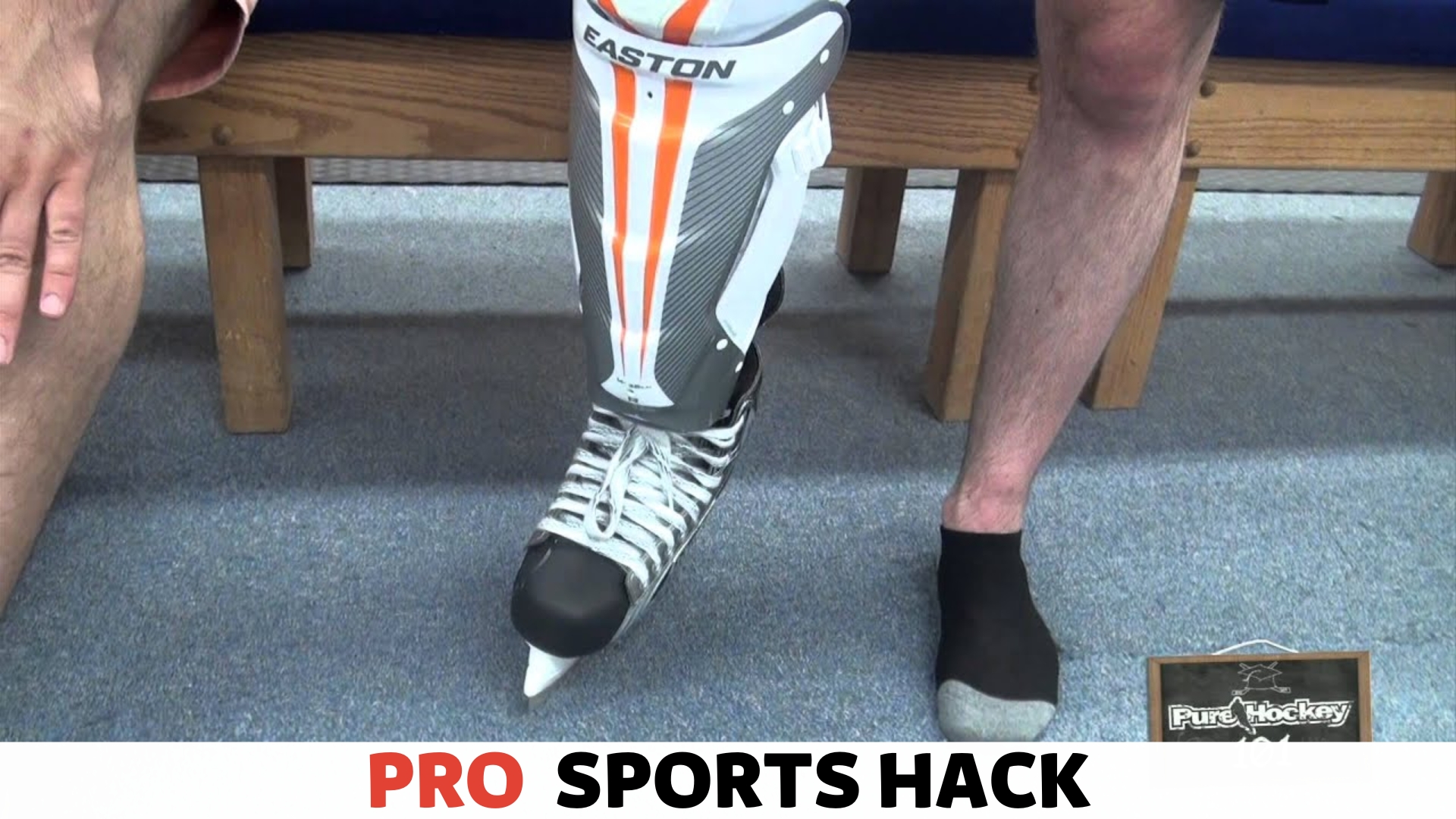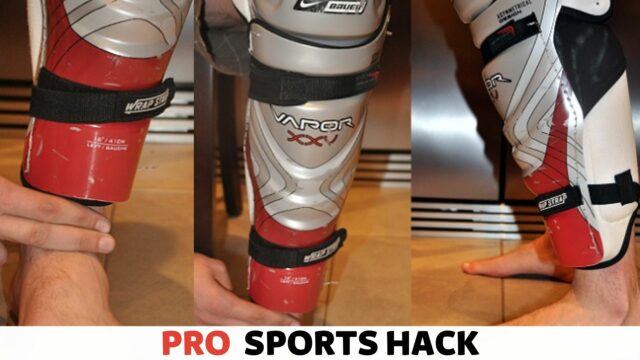
To determine the correct size for hockey shin guards, measure from the kneecap’s center to the skate’s top. This measurement will determine the length of the shin guard required.
Hockey shin guards are crucial protective gear for players, safeguarding them from injuries and bruises. It is necessary to have a perfectly sized shin guard that covers the entire shin for ultimate protection. A poorly fitted shin guard can be uncomfortable and increase the risk of injuries.
Choosing the right size depends entirely on the player’s height, weight, and preference. Incorrectly measuring or estimating could cause players to end up with shin guards that are either too big or too small, potentially leading to injuries. Therefore, it is essential to determine a player’s measurements accurately before purchasing new shin guards.
Hockey Shin Guards: Design, Purpose, and Key Components
Hockey shin guards are essential equipment for players at all levels. They protect the lower leg area and are designed to absorb the impact of pucks, sticks, and other players.
Understanding the key components of hockey shin guards will help you choose the right size and style for your needs.
Design
Hockey shin guards are typically made of foam padding encased in a hard plastic shell. The foam absorbs shock while the plastic shell deflects pucks and sticks. Some shin guards also have a removable liner that can be washed or replaced.
Purpose
Hockey shin guards aim to protect the lower leg area while playing. They also prevent injury from blocking shots and collisions with other players. Properly fitting shin guards should cover the site from the top of the skateboard to just below the kneecap.
Key Components
When purchasing hockey shin guards, it is important to consider the following key components:
- Length: Shin guards should cover the area from the top of the skate boot to just below the knee cap.
- Width: The width of the shin guard should match the width of your leg.
- Straps: Shin guards should have at least two straps to secure them.
- Liner: Some shin guards have removable liners that can be washed or replaced.
- Protection: Look for shin guards with thick foam padding and a hard plastic shell for the best protection.
Remember, properly fitting hockey shin guards is crucial for player safety. Understanding the design, purpose, and key components will help you choose the right size and style for your needs.
Before making a decision on your hockey skates, it’s crucial to understand the difference between senior and intermediate hockey skates to find the best fit for your game.
Factors to Consider When Selecting Hockey Shin Guards
When it comes to playing hockey, protecting your legs is paramount. Hockey shin guards are an essential component of the equipment worn by players to avoid injuries caused by sticks, pucks, or falls.
Height and Weight
Hockey shin guards are available in various sizes because players have different leg sizes. When choosing a shin guard size, it is essential to consider your weight and height. The following are sizing guidelines to consider:
- 10 inches or smaller: Youth players who weigh less than 70 pounds
- 10 to 12 inches: Youth players who weigh between 70 and 110 pounds
- 12 to 13 inches: Junior players who weigh between 110 and 130 pounds
- 13 to 14 inches: Junior players who weigh between 130 and 150 pounds
- 14 to 15 inches: Senior players who weigh between 150 and 180 pounds
- 15 to 16 inches: Senior players who weigh between 180 and 200 pounds
- 16 inches and larger: Senior players who weigh over 200 pounds
Style
There are two types of hockey shin guards: traditional and new-age anatomical styles, which conform to the player’s leg shape. While the traditional style offers more protection, the anatomical style provides a more personalized fit and mobility.
Consider your playing style and preferences when selecting a style. When it comes to protecting your shins on the ice, knowing how to measure hockey shin guards correctly can make all the difference.
Position
Your position in hockey will determine the level of protection you require from your shin guards. Forwards generally require less padding and mobility, while defensemen require more protection and coverage. Goalies require the most protection because they are exposed to pucks and sticks more frequently.
Material
Hockey shin guards are made from different materials, including foam, plastic, and composite materials. Foam shin guards are lightweight and offer moderate protection, while plastic and composite shin guards are heavier but provide more protection.
Another factor to consider is the material’s durability; you want a shin guard that can withstand heavy use.
Consider your weight and height when selecting the right hockey shin guard size. The style, position, and material are also vital factors when buying shin guards. Remember, the best fit always feels comfortable and supportive and does not restrict movement, allowing you to perform on the ice to the best of your ability.
In the world of hockey, it’s not uncommon to spot hockey coaches wearing red flowers on their lapels.
Measuring and Fitting: Determining the Correct Size for Hockey Shin Guards
Hockey is a high-intensity sport that requires a lot of equipment to keep players safe. Among the essential gear are shin guards, which protect the lower legs from flying pucks and accidental hits from a hockey stick. Shin guards come in different sizes, so it is crucial to know how to measure and fit them correctly.
Here’s a guide to help you find the right size for your shin guards.
Measuring for Hockey Shin Guards
Before buying a shin guard, measure the length from the bottom of your kneecap to the top of the hockey skates (or ankle bone). Follow these steps to measure correctly:
- Wear your hockey socks and skates.
- Sit comfortably on a bench or chair.
- Use a measuring tape and place one end at the bottom of your kneecap and the other at the top of the ankle bone.
- Round up to the nearest size when you get the measurement in inches.
Sizing Guide for Hockey Shin Guards
Once you get the measurement, consult the sizing chart provided by the manufacturer of your preferred brand. However, different manufacturers may vary in size and shape, even for the same size on the chart.
Understanding the terminology in hockey is essential, so let’s clarify terms like ‘PPD‘ and get a deeper insight into what it means in the context of the game.
So, try them on in the store or order online and put them on to make sure they’re the right fit.
Here are things to consider when sizing:
- The shin guard should have a length within one inch of your measured size.
- The top of the shin guard should be directly below the kneecap, and the back of the knee should have complete mobility.
- The shin guard must reach down to the top of the tongue of your skate.
- Ensure the shin guard fits snugly around your leg and doesn’t move too much.
With this guide, you can find the perfect size for your shin guards to provide maximum protection on the ice. Don’t forget to bring your knee and ankle measurements to help you get the best fit. Remember, the right-sized shin guard is a better investment than one that doesn’t fit or protect your legs so you can play hockey without any worries.
Additional Considerations for Selecting the Right Size Hockey Shin Guards
When it comes to playing hockey, safety should always be a top priority. The right equipment can help protect you from injury, and hockey shin guards are no exception. While knowing your size is an essential first step, there are additional considerations you should keep in mind.
Ankle Coverage and Fit
Your shin guards must offer adequate protection for your ankles and your shins. Ensure that they fit snugly around your ankle and offer full coverage so you’re not left vulnerable to injury.
Length
Shin guards come in various lengths, so it is essential to consider what type of player you are and where your style of play will place you on the rink.
- For defense players, longer shin guards may be preferred.
- For forwards, shorter shin guards could be more suitable.
Mobility
Your shin guards shouldn’t hamper your mobility. Ensure that they won’t interfere with your ability to skate, pivot, and move quickly on the ice.
Comfort
Playing hockey can be uncomfortable enough, but wearing uncomfortable equipment would only make things worse. Ensure that your shin guards offer comfort and support while on the ice.
- Look for options with adjustable straps or padding to ensure it seals comfortably around your leg and doesn’t slide out of place or dig into your skin.
- Choose lightweight and durable equipment.
Playing Level
Your playing level can also influence the type of shin guards you need.
- Beginners may find that low-cost options are sufficient, while more experienced players may require extra protection and durability, which would come at a higher cost.
- Elite players should consider selecting hockey shin guards with the highest protection and comfort.
Budget
Like most hockey equipment, hockey shin guards come at varying prices. Selecting a pair that provides the protection and comfort you need within your budget is essential.
Remember that choosing the right size hockey shin guards is crucial, but there is more to consider when selecting the perfect pair. Consider these additional factors to ensure that you choose a pair that fits you perfectly and doesn’t put you at risk of injury.
Have you ever wondered about the significance of ‘SHG‘ in hockey statistics? We delved into the meaning and importance of SHG in the game.
Frequently Asked Questions
What Size Hockey Shin Guards Do I Need for My Height?
The size of the shin guard you need depends on your height. Consult a sizing chart to ensure the proper fit for optimal protection.
Can I Wear Junior Size Shin Guards As An Adult?
It is not recommended to wear junior-size shin guards as an adult for optimal protection. Always refer to an adult sizing chart for proper fit.
Should Shin Guards Cover My Entire Shin?
Yes, shin guards should cover your entire shin, from just below your knee to above your ankle, for complete protection during gameplay.
How Tight Should Shin Guards Fit?
Shin guards should fit snugly on your leg without being too tight or loose. They should be secure enough to stay in place during gameplay.
Should I Try on Shin Guards Before Purchasing?
It is best to try on shin guards before purchasing to ensure the proper fit. Make sure they cover your entire shin and feel comfortable and secure.
Can I Adjust the Fit Of My Shin Guards?
Many shin guards come with adjustable straps or padding for a custom fit. Make sure to read the instructions or ask a professional for assistance.
Conclusion
As an ice hockey player, you cannot underestimate the importance of investing in the right gear. Your safety is paramount, and today we have discussed the significance of finding the correct size of shin guards.
Choosing the appropriate size of shin guards hinges on height, weight, and fit preference.
Always be sure to measure your leg length and choose the closest match. Opt for a size that provides adequate coverage to protect your shins and knees without compromising your flexibility on the ice.
Lastly, your game’s level of play and style determines the shin guard you need.
With these points in mind, you can find the ideal size of hockey shin guards that offer maximum protection and comfort while enjoying the most exciting game on the ice.




![Cat in the Chrysalis Spoiler: All You Need To Know [Updated] Cat in the Chrysalis Spoiler](https://prosportshack.com/wp-content/uploads/2024/02/Cat-in-the-Chrysalis-Spoiler-100x75.jpg)







